Cold smoking was used as a type of preservation for centuries before refrigeration was invented.
Today, we are only familiar with a few foods that are commonly sold cold smoked. Bacon is one tasty example, but there are also smoked cheeses and smoked fish.
Cold smoking bacon removes moisture and drys the meat while exposing it to flavorful smoke. The smoke helps keep the meat from going off, as does the lack of moisture.
The final product is delicious and worth the extra effort.
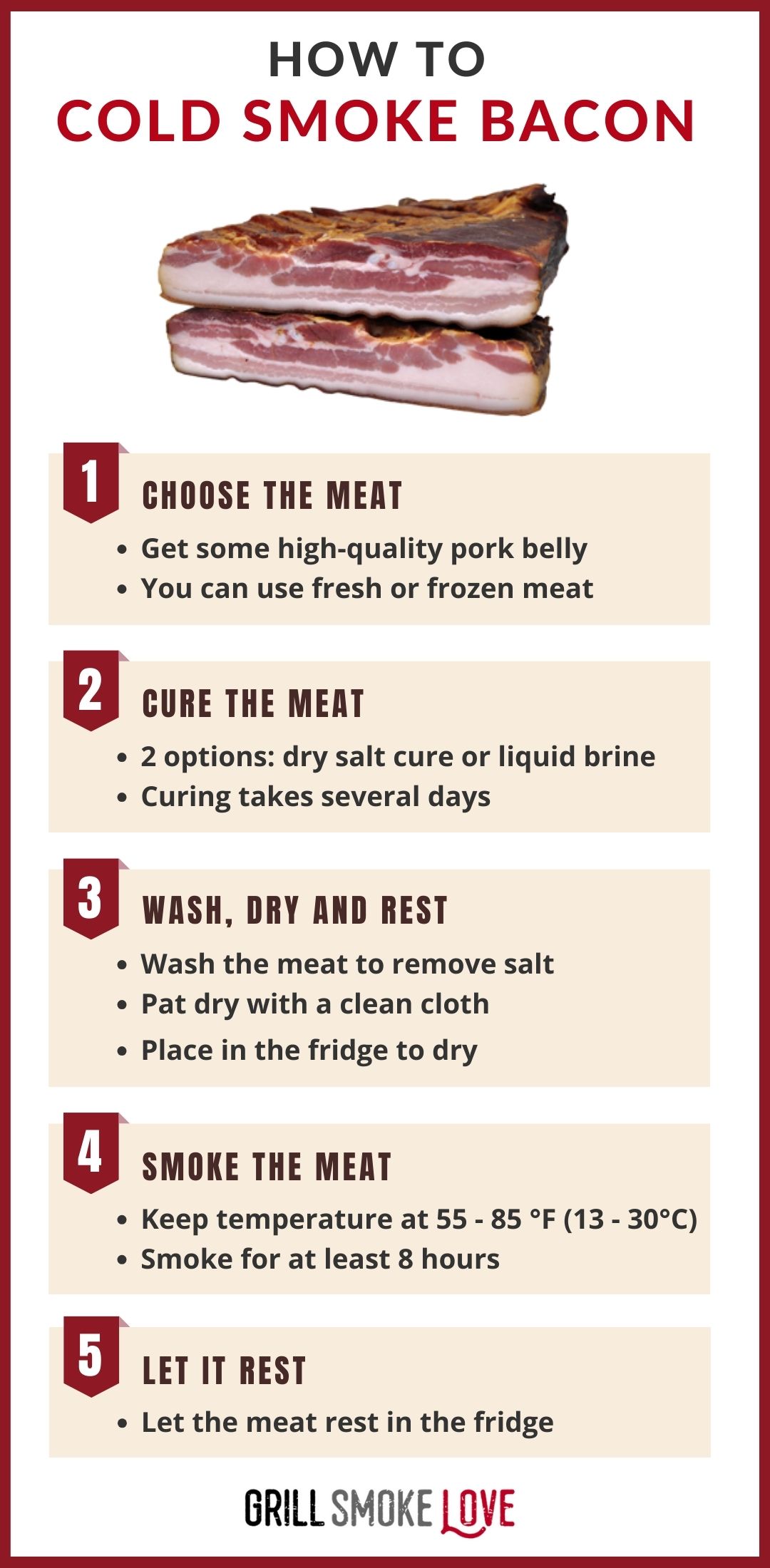
Cold Smoking Bacon: Temperature, Humidity, and Airflow
When you consider how to go about cold smoking bacon properly, it helps to remember what cold smoking is and is not. It is a preservation method that is more like dehydrating the meat than a form of cooking.
It is not hot smoking, which is what we typically associate with barbecue. And it’s not backyard grilling on a warm Sunday afternoon.
Keep it Cool and Dry
Cold smoking is best done when it is cooler and less humid outside.
Perhaps this is why it is less common in the American South, where hot smoking is king. Whatever the reason, the low temperatures needed for cold smoking are difficult to maintain if it’s already hot outside.
And since the goal of cold smoking is to remove moisture and dry the meat out, humidity only slows the process down. The drier the air, the better.
Let the Air Flow
Getting the proper airflow around the meat is vital to ensuring that the bacon doesn’t get too much or too little smoke flavor. The air should continuously be flowing around the food.
This is contrary to how most hot smoked items cook, which is more or less locked in a hot cabinet with a bunch of smoke. In cold smoking, you need lots of fresh air with a hint of smoke moving across the food.
How Long to Cold Smoke Bacon?
With cold smoking, the cooking time really depends on how much smoke flavor you want to be locked into the food.
You can go with the minimum time, which is about 8 hours of cold smoking after the meat has been cured. Larger slices of meat will take considerably longer.
But this is where cold smoking just begins. You can continue smoking the meat each day, resting it in the fridge between sessions. You can do this for many consecutive days if you want.
If you are looking to preserve the meat properly, you need to base your smoking time off of weight. The meat’s total weight should be reduced by 20 to 30 percent during the curing and smoking process.
What Equipment is Needed?
Next, let’s take a closer look into the equipment and supplies needed for cold smoking bacon.
Making the Smoke
Cold smoking will require the backyard chef to get a little creative with their equipment. Yes, you could buy a dedicated cold smoker, but chances are you can make something you already own work.
If you want to make something permanent, many DIYers make cold smokers out of wood, bricks, or even old refrigerator cabinets.
Just remember, most charcoal, gas, and electric smokers available on the market are designed for hot smoking.
To properly cold smoke, the temperature must always remain below 86 degrees Fahrenheit or 30 degrees Celcius.
But with some effort you might be able to use your smoker’s cabinet or a grill together with a cold smoke generator for excellent results.
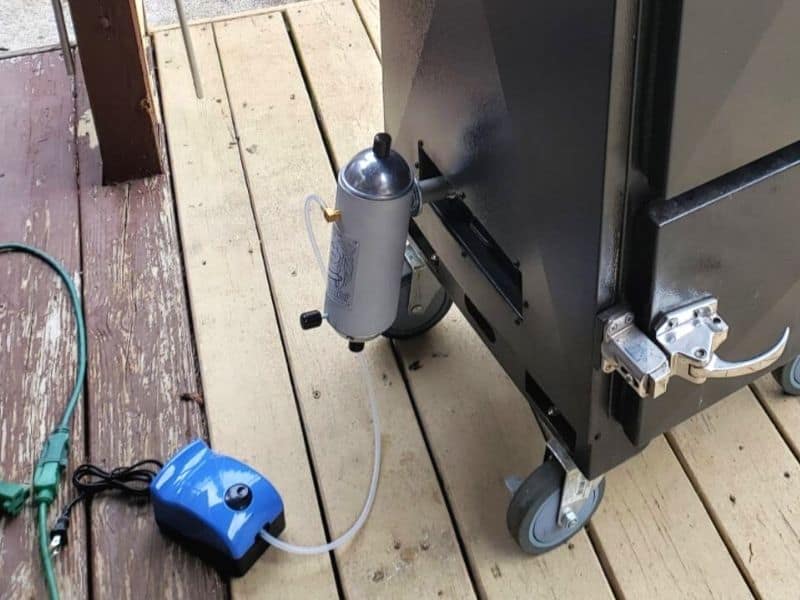
Some brands also sell cold smoker attachments for their grills and smokers. They are typically available for pellet grills and cabinet-style electric and propane gas smokers.
Most cold smoke cabinets have a two-chamber design. That way, the wood dust or chips are heated up in one chamber to make the smoke, and that smoke is then ducted into the food chamber. This keeps the heat away from the food.
There are several ways to make smoke without putting heat into the food, but by far, the easiest solution is a commercial smoke generator. Some of these are simple maze designs that slowly burn wood pellets or wood dust. Others have airflow control devices, like the popular Smokai smoke generator.
Types of Wood
The type of wood you use will depend on the smoke generator you’re using and how long you plan on smoking your bacon. The longer you want to smoke the meat, the milder the wood should be.
The classic choices for the task are mellow fruitwoods. Applewood bacon is all the rage, but cherry or peach are good choices too.
You can also use stronger wood flavors, like pecan, hickory, or even mesquite. Just remember that the bacon will be exposed to these flavors for much longer than it would be in hot smoking, and the meat can easily get bitter.
If you want a strong and smokey flavor without unpleasant bitterness, create a mix of 80 percent fruitwood and 20 percent wood with a strong flavor.
Other Equipment
Your smoker or grill thermometer might not read correctly at the low temperatures required for cold smoking. A probe-style instant-read thermometer will help you keep the smoking area at the right temperature level.
How to Cold Smoke Bacon – The Process
Step 1: Picking the Right Meat
Getting the Best Pork Belly: Since you’re going to go to the effort of cold smoking your meat, you want to do it with the highest quality meat you can find. You want a farm-to-table sort of situation. It’s always best if you’re able to trace the meat’s origins. The less it has traveled and the less aged it is, the better.
Fresh or Frozen: You can use frozen meat, as long as it is high quality and of known origins.

With or Without Skin: The pork belly can be smoked either with the skin or without. If you smoke the skin, it can be removed and saved in the freezer to flavor stews and soups. It’s basically a bomb of deliciousness!
Scale It: Once you have your slab of pork belly, be sure to weigh it on an accurate kitchen scale. You need to know the weight before you begin the process because the end goal is to lose 20 to 30 percent of its weight during the process. This is the best way to measure doneness in cold smoking.
Step 2: Fully Cure the Meat
There are two ways to cure the meat when cold smoking bacon. You can choose either a dry salt cure or a liquid brine.
Dry Salt Cure
The dry salt cure is just coating the meat in a thick mound of salt and seasonings. The salt is rubbed into the surface of the meat, and it draws out moisture. Use at least two percent of the meat’s weight in salt to properly cure it.
After an appropriate cure length (about 1 day per pound of meat), the salt is washed off and discarded. Make sure to wash the salt off properly by soaking the bacon in cool water for at least two hours. Also, change the water in the midway of the soaking.
Liquid Brine
Brining is submerging the meat in a very salty water bath for a long time. Since it is liquid, it has better penetration of the meat. Both methods are effective, and it’s somewhat a matter of preference.
A typical brine is brought to a boil with water, salt, sugar, and curing salt. Once the brine liquid has cooled, the meat is soaked while in the refrigerator.
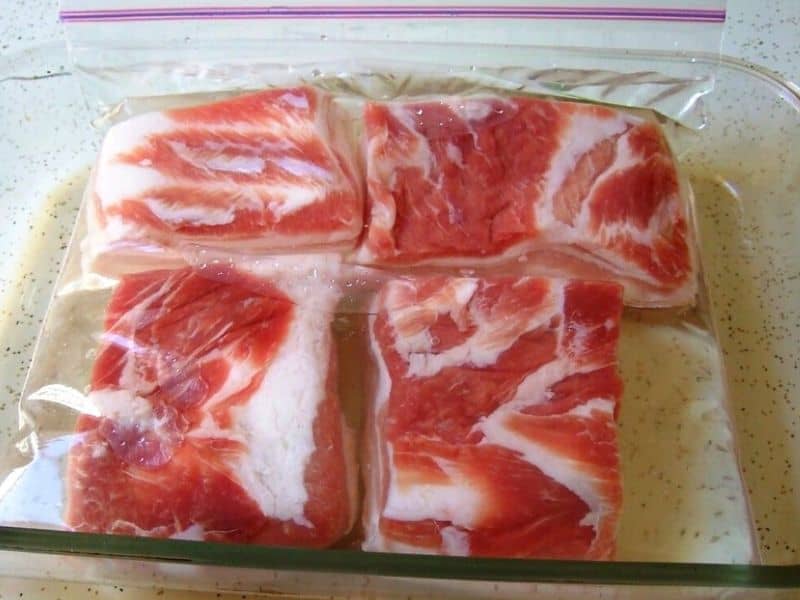
You can add in other flavors that you want to impart into your bacon. Molasses or brown sugar will add a nice sweet note to the final product and are commonly added to brines.
You should keep the meat in the brine for about a week, and you should turn it every day to ensure even soaking. Some new recipes call for “instant cure” products that can reduce this time to a few days.
Step 3: Wash, Dry, and Rest
Wash and Dry the Meat: After curing, wash the meat completely to remove the salt, and then pat it dry with a clean cloth. The curing and smoking process’s purpose is to dehydrate the meat, so your goal is to remove excess water and dry it out. The cure is the first step in this process.
Remember Hygiene: Proper curing is also crucial to creating a harsh environment for bacteria to grow. The cold smoking process occurs in that FDA “danger zone” of foods, above 40 degrees and below cooking temperatures. Because of this, proper sanitary food handling and refrigeration between smoking sessions are essential.
Refrigerate: Once the meat is thoroughly washed and patted dry, place it back in the fridge to dry out a little more. As it dries uncovered, it will form a pellicle. This is a tacky and almost sticky coating on the outside of the meat. Keep it in the fridge at least overnight or for up to a week.
Step 4: Cold Smoking
Hopefully, you’ve used that time to set up the perfect space for cold smoking. Temperatures, airflow, and humidity are all critical. Remember, you aren’t cooking the food so much as dehydrating it in a smokey environment.
Temperature
However you achieve it, your cold smoker should never get above 86 degrees Fahrenheit or 30 degrees Celcius. Anything above that temperature will cause your bacon to cook, which isn’t the goal at all.
Many people cold smoke at even lower temperatures. Anything between 55 and 85 degrees Fahrenheit will work great.
Keep an eye on the outdoor temperature and the weather. If your smoker is making heat and the daytime temperature is over 75 degrees, it can quickly heat the inside of your smokehouse to over 86 degrees. Keep your smoking out of the sun and in a cool area. If you have to, do your smoking at night.
Many commercial smokers have racks, but the traditional way of hanging them draws the salt out of the meat better.
Airflow
Once it’s all set up, smoking is all about airflow. You want the smoke to disperse naturally and be drawn around the food. Don’t put the food right on top of the smoke because this will result in a bitter taste.
It’s Time to Smoke!
Now that you have the meat prepared and the smoking environment all set up it’s time to start smoking!
As mentioned earlier, you can smoke the bacon starting from 8 hours up to several long smoking sessions depending on the size of the meat you are smoking and how much smokiness you want it to have.
Cold smoking takes occasional monitoring to ensure that the temperature stays in the target zone. Depending on the smoke maker you’re using, it may need to be refilled with wood chips at some point. And unless it’s electric, you’ll want to ensure that the fire hasn’t gone out by checking it every hour or two.
It may take numerous smoking sessions to get your meat preserved with the cold smoked method. The goal is weight loss – you want your bacon slab to lose 20 to 30 percent of its original weight.
Step 5: Rest in Refrigerator
Regardless of how long you smoke the meat or over how many sessions, it’s essential to rest the meat in the refrigerator after. Wrap the meat in plastic and let it sit for at least a day or two. This will allow the smoke flavors to permeate the bacon.
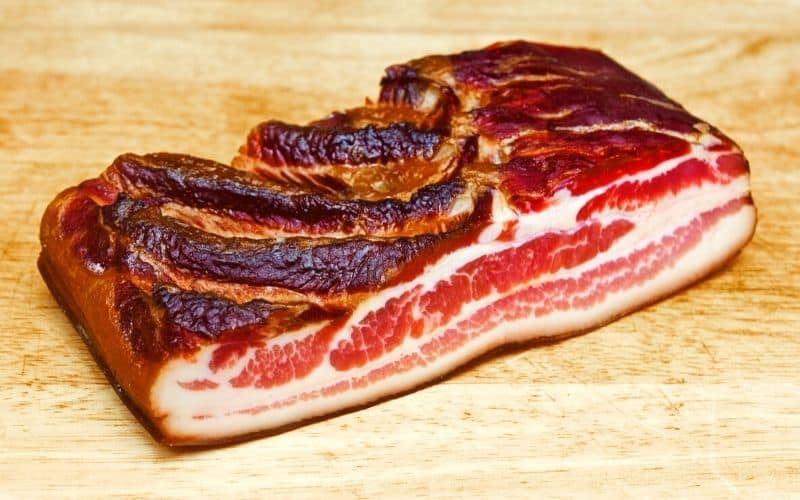
Cold Smoking vs. Hot Smoking Bacon
Here’s a look at some of the differences between cold smoking and hot smoking bacon:
Time: Cold smoking is a form of preservation, and as such, the time of the smoking is extremely variable. Some people like to cold smoke only once and then cook the bacon as they normally would. Traditional cold-smoked preserved bacon takes many days of smoking to get to the proper weight. In contrast, hot smoked meals are done the same day, cooked until they reach the desired internal temperature, and then eaten right away.
Temperature: Cold smoking is always done below 86 degrees Fahrenheit or 30 degrees Celcius. The exact temperature isn’t that important, and you can successfully do it at any temperature between 50 and 80 degrees Fahrenheit. Hot smoking is done at much higher temperatures, usually between 180 and 250 degrees Fahrenheit.
Device: Because of the low heat and the long cooking times required in cold smoking, regular backyard barbecue equipment is out of the question. You might be able to use your smoker’s cabinet or the grate on your grill to hold the food, but you’ll need to find a cold source of the smoke. The easiest way is to invest in a cold smoke generator.
Wood Choice: Because cold smoking takes a long time with a lot of smoke exposures, you should select wood with mellow and mild flavors. The best choices are light fruitwoods like apple or cherry. If you want to use a more robust flavor, like mesquite or hickory, you’ll need to mix it with lighter woods. While hot smoking can be done with only using a strong flavored wood, with cold smoking it’s best not to use more than about 20 percent. Otherwise, you will risk making the bacon bitter.
Taste: Both cold and hot smoking results in amazing smokey flavors. Cold smoking is usually used for items that benefit from taking smoke over a long period. It works very well with pork belly because the fat has so much time to absorb the flavor. A cold-smoked slice of bacon will have a stronger smoke flavor than a hot smoked one.
Final Thoughts
Cold smoking bacon is an old-world cooking technique that will connect you to the food you eat. It may seem complicated, but it doesn’t take much effort once you have a system down.
And once you’ve mastered bacon, you’ll find all sorts of foods that will be super delicious when cold smoked!
Read also: Best Portable Smokers for Camping and Tailgating Reviewed
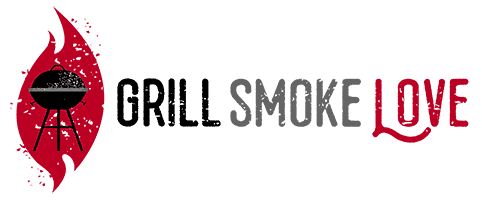


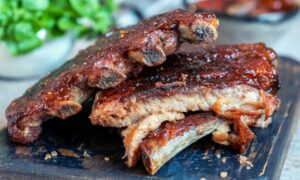

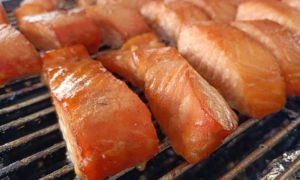


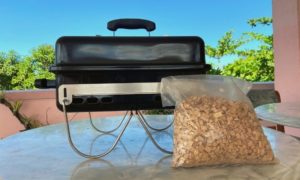
8 thoughts on “Cold Smoking Bacon – How to Do It Right”
I followed the instruction to the best but my bacon was too salty to eat. What was my error.
Hi Helmut,
Sorry to hear that your bacon turned out too salty. It’s hard to say what went wrong without having more information, but I would guess you didn’t wash it well enough.
Here is what I recommend for next time to remove extra salt before smoking the bacon: soak the bacon in cool water for two hours and change the water at least once.
I was wondering how long you can leave it in the fridge before freezing, I smoked cheese before and right of the smoker it is like licking the bottom of an ash try but after it sits for 4 to 6 weeks it is great. Would this be the same for the bacon?
Thanks
Rob
Hi Rob,
I have never tried keeping it in the fridge for more than a week. But I think it should be good for at least 3 to 4 weeks, maybe even more. Also depends on things like how long you have been smoking the bacon and in what temp, and the temp of your fridge.
-Joonas
Hi Joonas, can cold smoked bacon be frozen?
Hi Kristy,
Yes, you can freeze cold smoked bacon. I recommend slicing and freezing the bacon right away after you’re done smoking it.
-Joonas
I purchased 2Kilo of supposedly smoked sliced bacon from a butcher. Tried it the next day only to find it was full of liquid, the white stuff that comes with unsmoked bacon. Can I re smoke it using the cold method.
Thanks
Tom
Hi Tom,
It’s very hard to say what is the best option without seeing the bacon. I think you can cold smoke the bacon. However, the safest option would be hot smoking it to make sure there is no harmful bacteria.